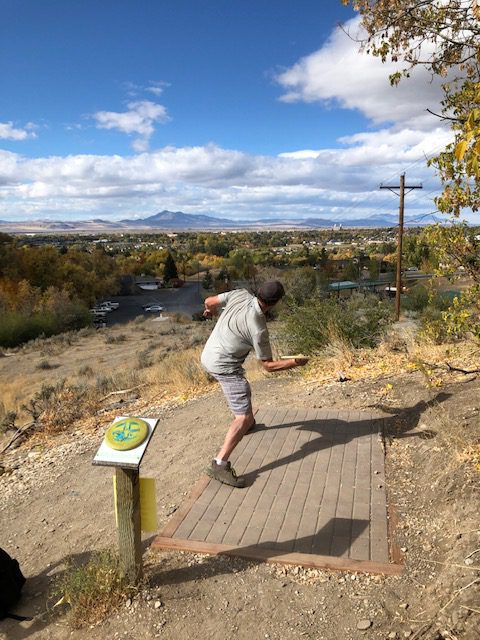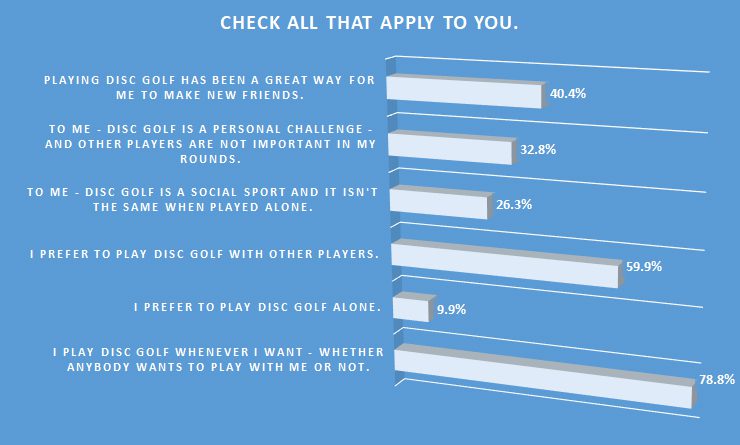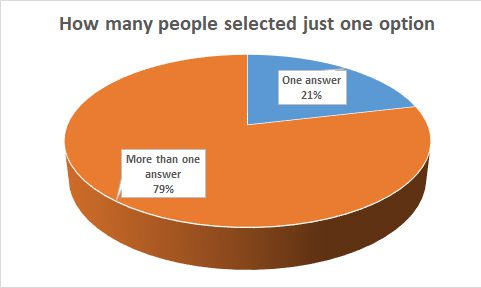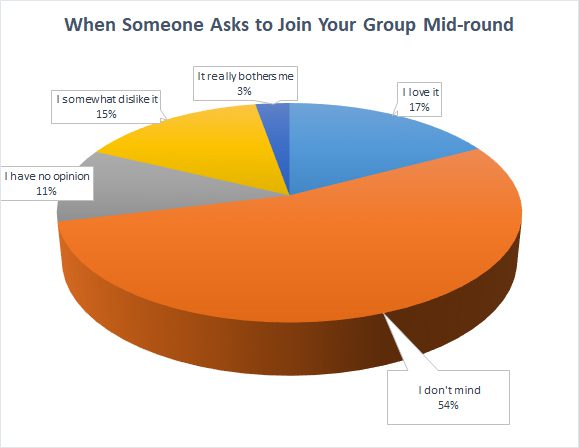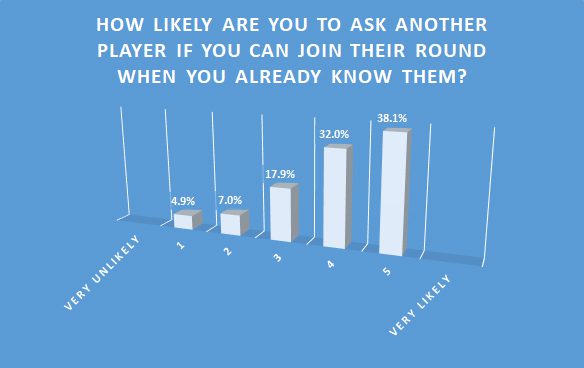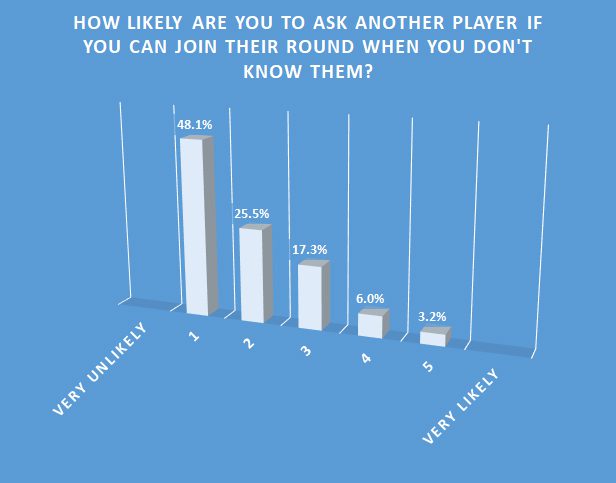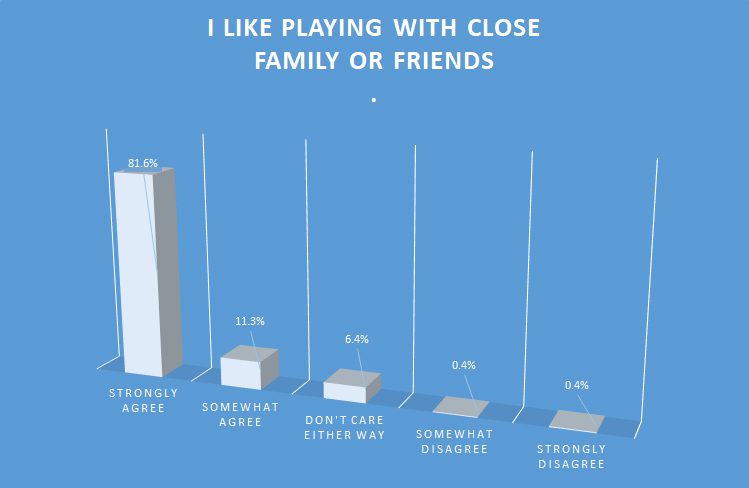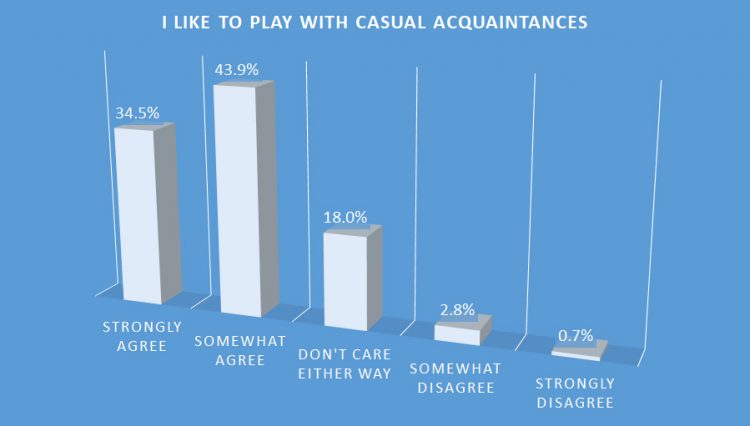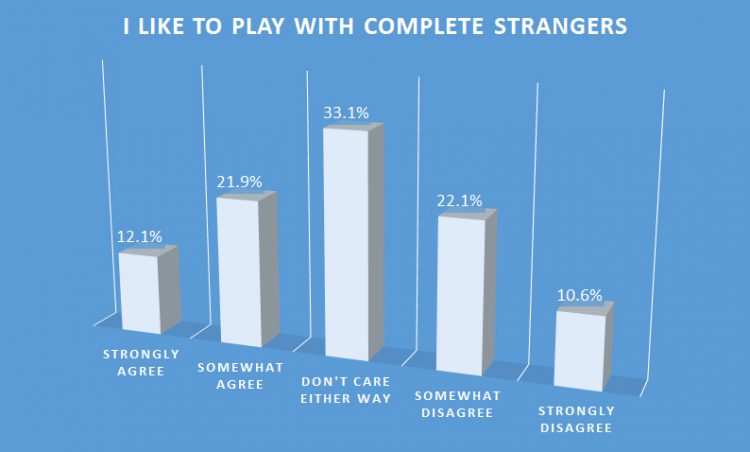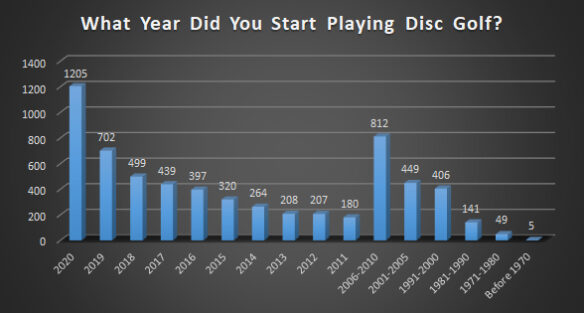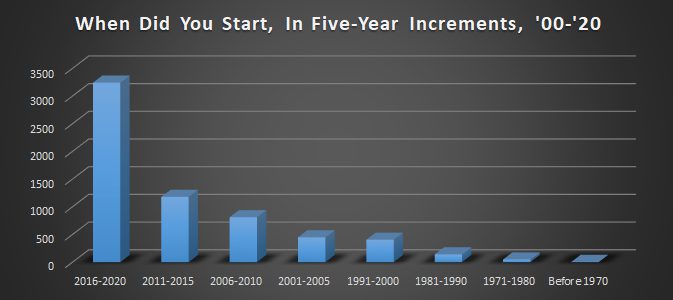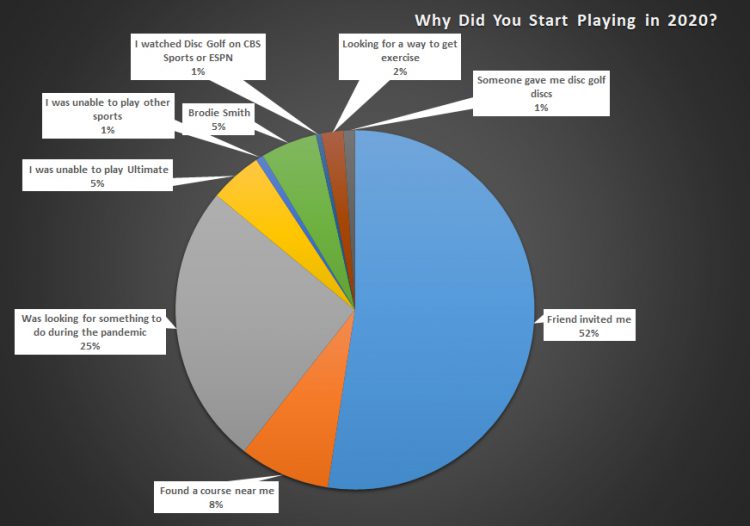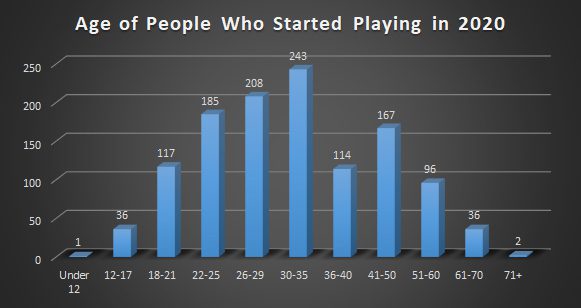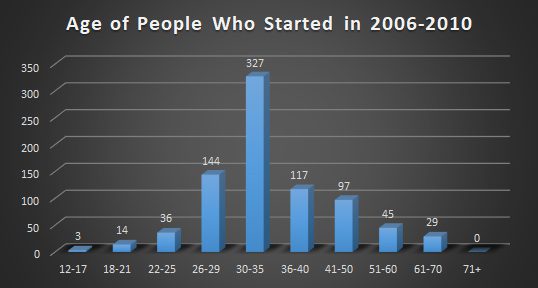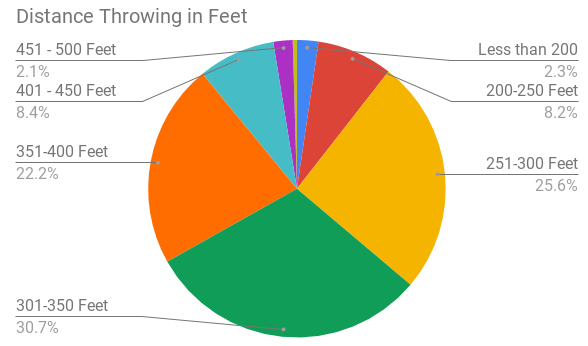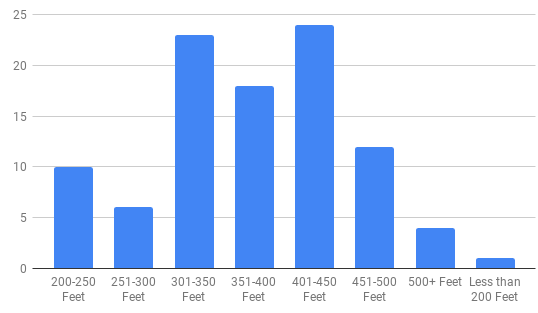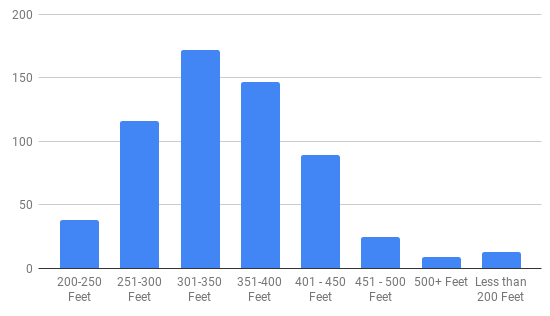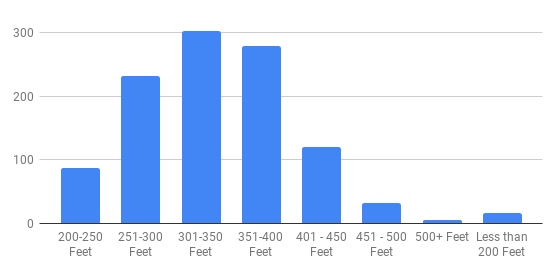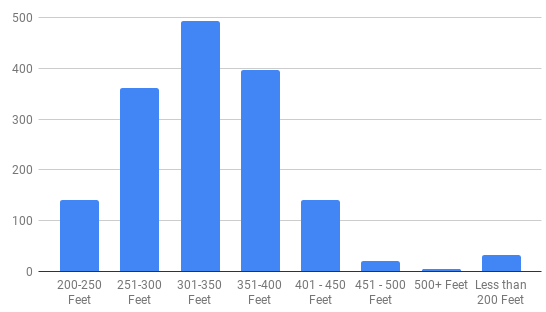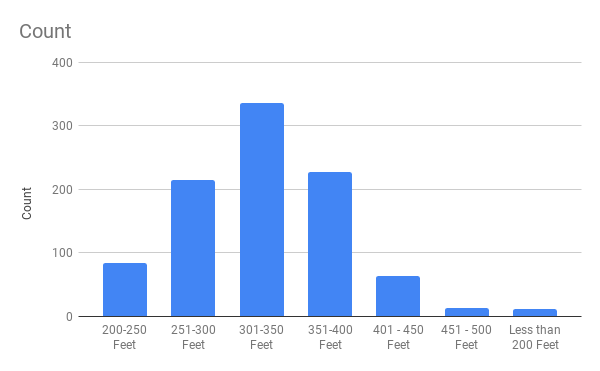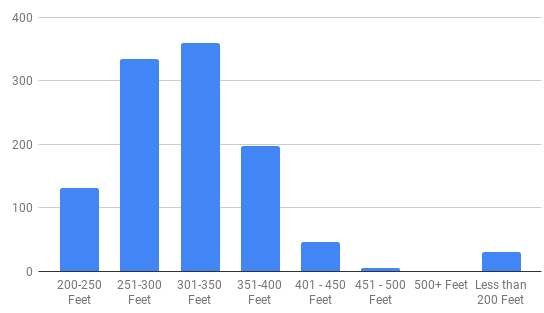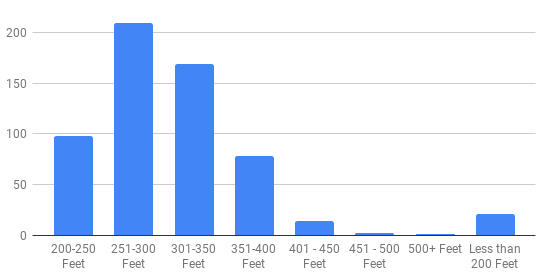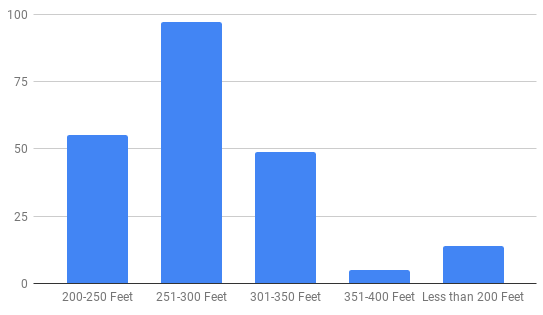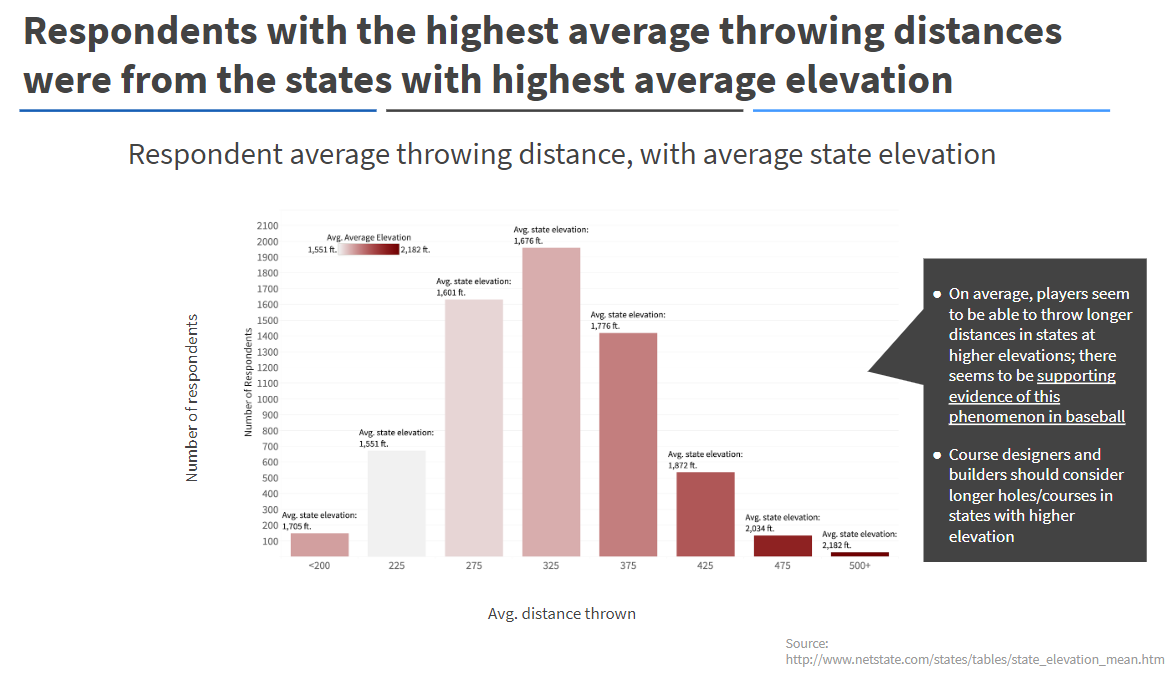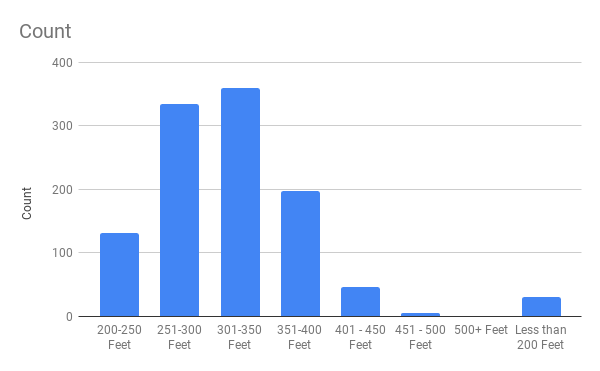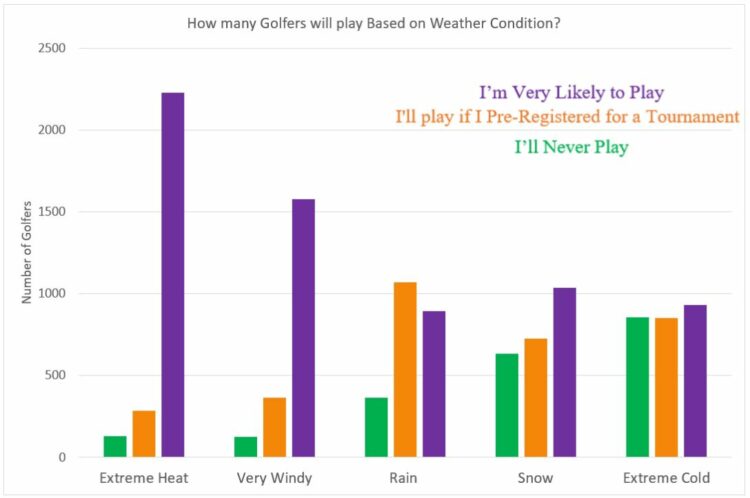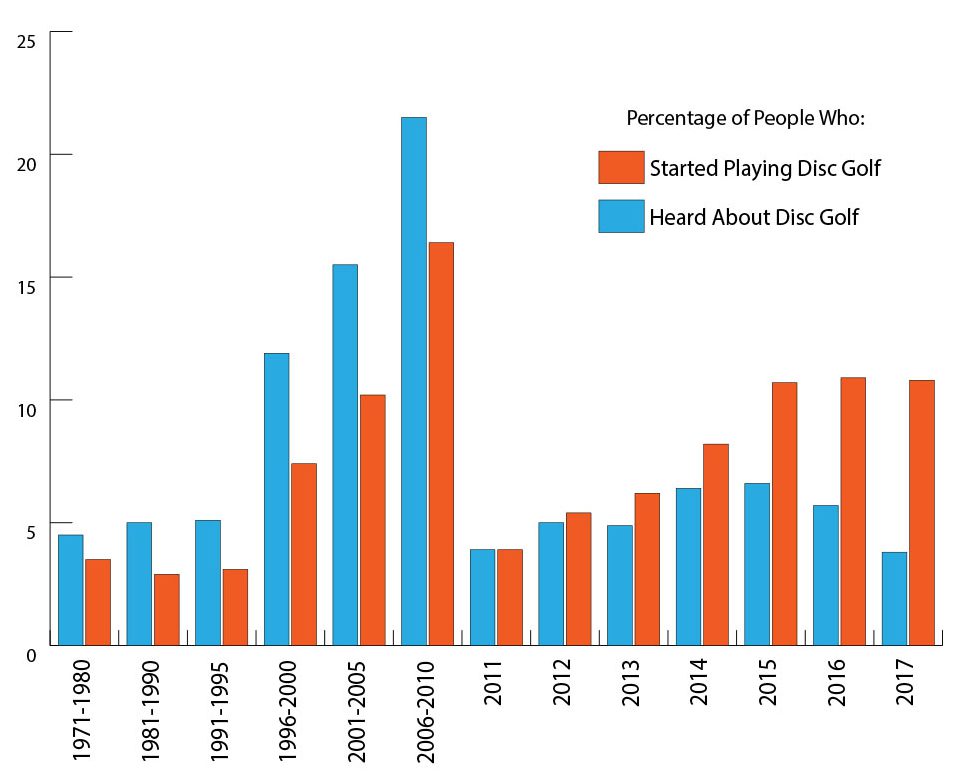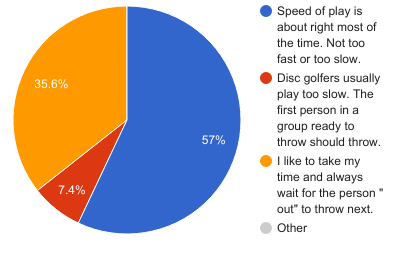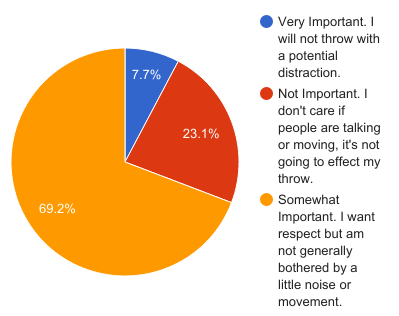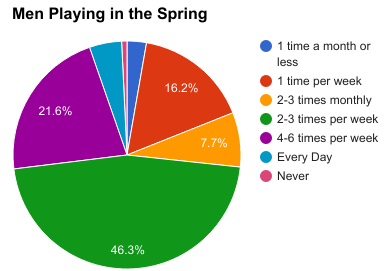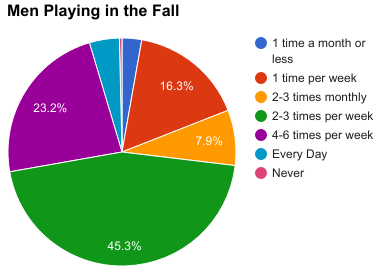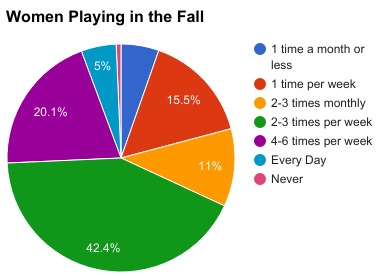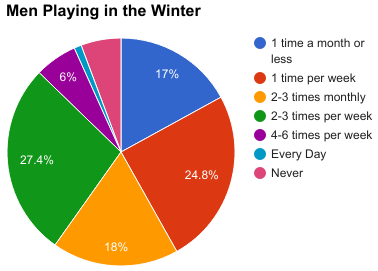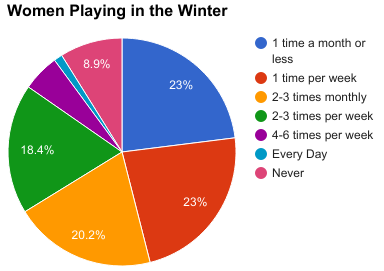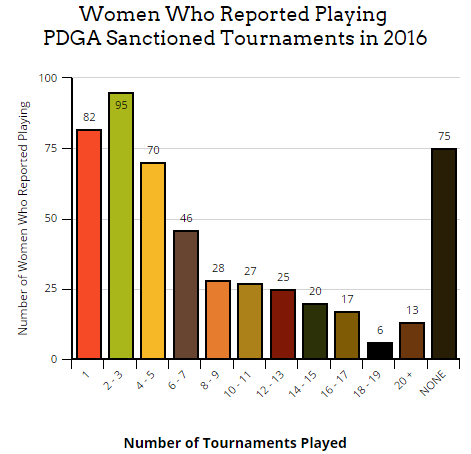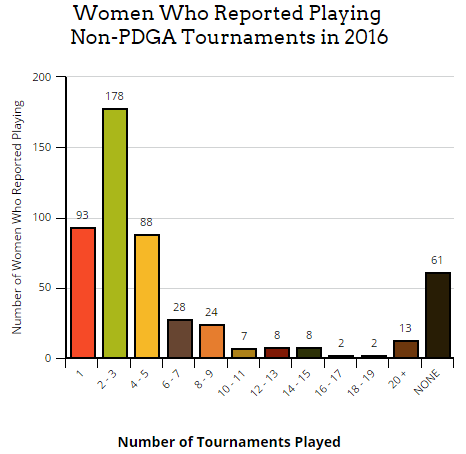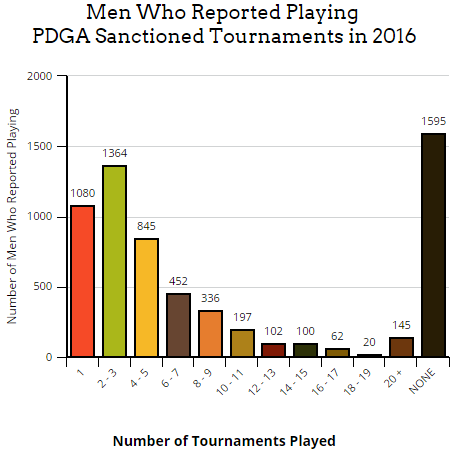State of Disc Golf Results: How Often We Play
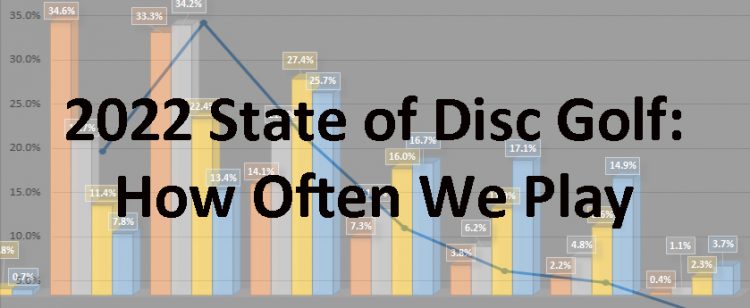
As I write this blog in early March, it has been snowing recently and the temperature will approach zero tonight in northern Utah. I suspect there will still be a few local golfers that will still huck today. However, most of us will be holed up inside, waiting for a reprieve from the inclement weather. While we still play disc golf year ‘round here, there are days that the local courses remain empty, or nearly empty. Almost every time that happens, it is related to bad weather.
How often we get out to play can be heavily influenced by where we live and the weather conditions we experience. Extreme temperatures, rain, snow, and excessive winds can reduce our playing time. The level of our desire to improve also plays an important part in how much time we carve out to throw. And of course we all have life events that dictate our free time or lack thereof, such as school, family, and careers.
How Often We Play
In this blog we will explore the survey question that asked how often we get to play disc golf. We’ll breakdown those numbers based on where we live and our skill level, to see if those factors play a part in how often we play. And we’ll look at other demographics, liked age and gender, just to see if we can find any interesting numbers.
The question we asked in the survey was, “On average, how many rounds of disc golf did you play per month in 2021?” The options to choose from ranged from zero to ‘31+’ days. Here are the survey results. The first graph shows the results in raw numbers, and the second graph shows the results as a percent of the total.

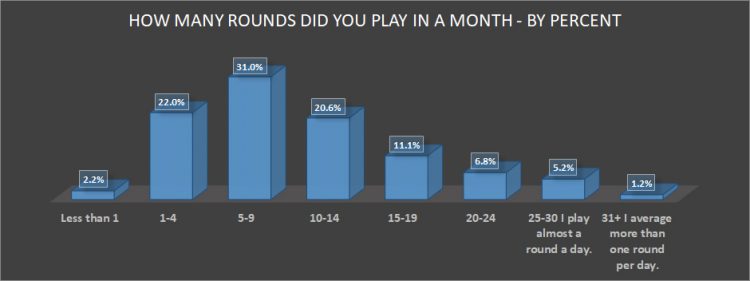
Over ten percent of us are getting out to play 20 or more times per month, which is a lot of disc golf. If you are playing competitively, you are likely one of the more frequent players. Nearly a fourth of us are playing, on average, at least once every other day.
At the other end of the active spectrum, a tiny percent of us aren’t even averaging one round per month. Maybe from injury? Or an excessively busy schedule? Whatever the reason, at least they were able to fill out the survey!
The ‘one-percenters’ in this survey average more than one round per day. Whether they are going out a couple times per week and getting multiple rounds each time, or playing at least one round per day, they are the lucky ones. Or they are unemployed or retired, or professional disc golfers.
Where We Live
I started the blog discussing the weather and how it affects local disc golf. My first thought in seeing the results is that there may be a direct correlation between where we live and how much we play. Yes, we CAN play in pretty much any kind of weather. We are just more easily motivated to play when the temperatures are above a certain temperature, and when the ground isn’t covered with snow, ice, or mud.
To test my hypothesis, I took all of the southern US states and Hawaii, compared the number of rounds they played per month with the rest if the country. Not an exact science, but there is a reason why many pros gravitate to those states in the winter. Low temperatures and poor weather can still a factor, but winters in the states north of them are colder and have more snow. For the comparison, I took Florida, Georgia, Alabama, Mississippi, Louisiana, Texas, New Mexico, Arizona, California, and Hawaii. I compared those to the rest of the states. Here are the results, shown as a percentage of people in each group:

So much for that theory! There were some categories that the Southern states were slightly higher in, and others they were slightly lower. Overall, we can’t conclude that the states with warmer winters get in more rounds. Their hands may be less numb, but they aren’t playing more than the rest of us.
Skill Level
Another aspect of disc golf that I wanted to explore is to see if there is a correlation between our skill level and the number of rounds we play per month. My initial thought is that someone who plays more, gets better and considers themselves as a higher level player. Also, we could say that someone who is as better player may be more interested in playing more to maintain a competitive edge in leagues and tournaments. Below is a chart showing the percentage of each skill level, according to their monthly number of rounds.
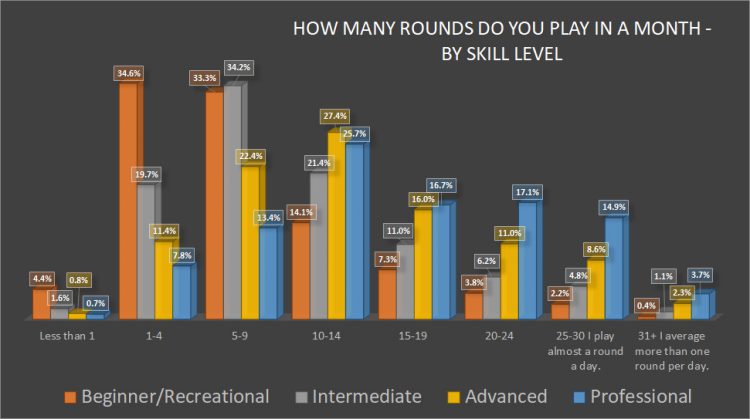
This time the numbers are more aligned to what I would expect. Professional disc golfers represent a higher percentage of each number category above 15 per month, and is second to advanced players in the 10-14 category. In fact, the skill levels in the categories above 15 rounds per month are in order, from low to high, according to skill level. Conversely, beginners and intermediate players take the top spots in the categories below 10 rounds per month.
Conclusion
Since we are all active enough in the sport of disc golf that we took the time to fill out a survey, read the results, or both, we all enjoy the time out on a course. Sometimes the number of rounds we play in a month is dictated us and our desires, and sometimes it is dictated by our schedules and life circumstances. Hopefully, this year will see us getting in a few more rounds per month than last. We’ll conclude this blog by comparing last year’s results to a few years ago.

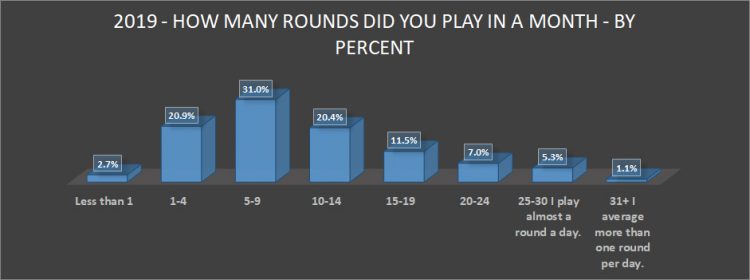
It is rather impressive how similar the results are from the prior survey. In every number category the results are practically the same. With all of the growth we’ve seen recently, and the life-changing pandemic, we are still throwing at about the same amount as before. Perhaps that is a good thing.
Tune in next week when we will look at more survey results.

